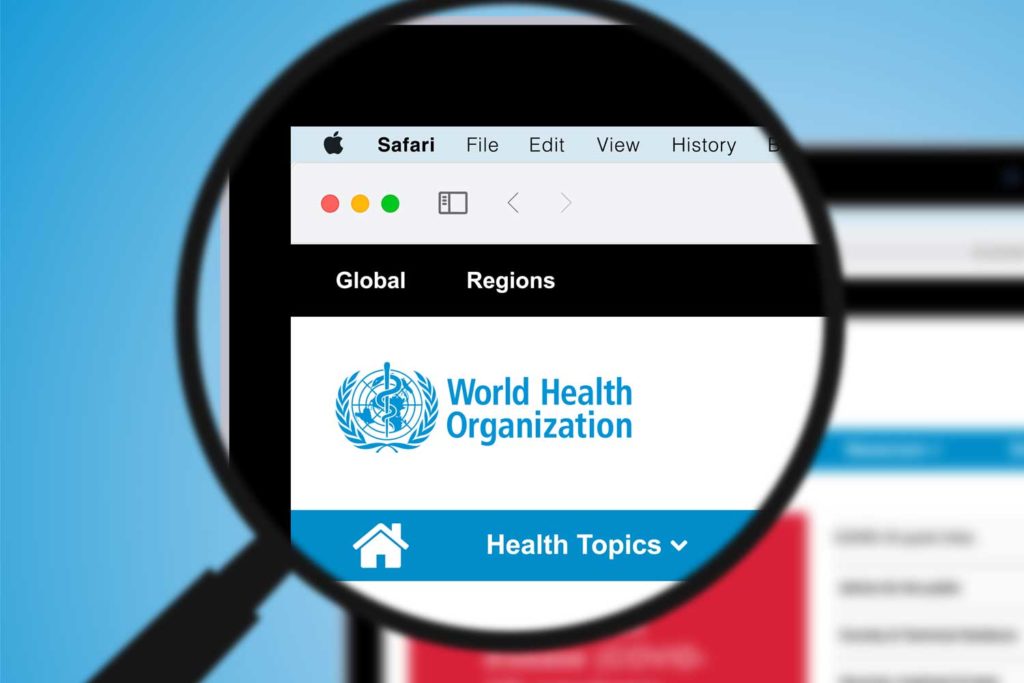Broughton’s Nveed Chaudhary explains how the FDA’s new powers to regulate synthetic nicotine will impact the industry.
Contributed
In mid-March, the U.S. Congress moved to close the loophole on the use of synthetic nicotine in electronic nicotine-delivery systems (ENDS) in the United States, bringing it into line with tobacco-derived nicotine products. In this article, Nveed Chaudhary, chief scientific and regulatory officer at Broughton, an independent life sciences contract research organization, explains what this regulatory change means for the next-generation nicotine-delivery industry in the U.S. market.
What has happened in the U.S., and when will the changes take effect?
The U.S. Congress has extended the Food and Drug Administration’s authority over tobacco products to include synthetic nicotine in products such as vapes, heated products and oral nicotine pouches. This will bring these products into line with tobacco-derived nicotine next-generation nicotine-delivery products. The new regulation was passed as part of a U.S. lawmaker’s long-term spending bill signed into law by President Joe Biden on March 15. It takes effect immediately, and manufacturers of synthetic nicotine vapes and oral nicotine pouches have 60 days from March 15 to submit a premarket tobacco product application (PMTA) dossier to keep their products on the U.S. market.
Was the industry expecting this regulatory change?
The ENDS industry had been watching U.S. regulators with interest around this issue for some time and expected a change to come at some point. The speed with which it has been passed took the industry by surprise. It was included in a long-term spending bill that contained hot-button issues like funding for Ukraine, Covid support and regular government running expenses, enabling it to be passed without debate or amendment. That being said, U.S. lawmakers would possibly argue that ENDS manufacturers have had almost two years since the PMTA regulations were published to start collecting data on their products.
What is synthetic nicotine?
Synthetic nicotine, also called tobacco-free nicotine, is a synthesized form of nicotine produced via a chemical process instead of extraction from tobacco. Recent improvements in manufacturing processes have enabled producers to mimic the enantiomeric ratio of tobacco-derived nicotine. Synthetic nicotine is not new, with it first synthesized in 1904, but the production on a mass scale is relatively recent. Most e-cigarette manufacturers do not use synthetic nicotine because it tends to be more expensive than tobacco-derived nicotine. There is also far less infrastructure to create synthesized nicotine from scratch than the well-established facilities for harvesting nicotine from tobacco plant materials.
Why have U.S. regulators chosen to close the synthetic nicotine loophole now?
Previously, the FDA defined “any product made or derived from tobacco and intended for human consumption, including any component, part or accessory of a tobacco product” as a tobacco product. Under this description, e-cigarettes containing tobacco-derived nicotine e-liquids were subject to the PMTA regulatory framework while those containing tobacco-free nicotine were not. However, some U.S. lawmakers and nonprofit organization lobbyists have long discussed closing this loophole because it enabled manufacturers to introduce tobacco-free nicotine products to the market without regulatory oversight. Following the publication of the recent National Youth Tobacco Survey (NYTS) data, there is particular concern about the youth usage of synthetic nicotine disposable vape products, e-liquid flavors and marketing, which the FDA has had no authority to challenge. As we saw with tobacco-derived nicotine ENDS products, there is rightly intense scrutiny around products that are found to be attractive to youth, and this has become an area of significant political focus in the U.S. The fact that it appeared that some manufacturers were using the loophole to get around regulatory control is likely to have increased the speed with which lawmakers felt they had to act.
What can synthetic nicotine manufacturers do now?
If a product is already on the market in the U.S., manufacturers have 60 days to file a PMTA. If a manufacturer was in the process of commercializing a new synthetic nicotine product in the U.S., they have a 30-day window to launch the product and then 30 days to file their PMTA. This 60-day deadline for data submission will be very challenging for most tobacco-free nicotine ENDS manufacturers to meet but may not be impossible. At Broughton, we are currently in discussions with several clients about the regulation and what they will need to do to submit a PMTA within the timeframe allowed.
Is it possible to prepare a PMTA dossier within this short timeframe?
We believe it is, but manufacturers need to act immediately, and there are no guarantees of success. Especially as many of the manufacturers who submitted PMTA dossiers for their tobacco-derived nicotine ENDS products still don’t know if they have passed the FDA requirements to be awarded a marketing authorization. The first question is how much data a synthetic nicotine ENDS manufacturer already has available about their product and then to build analytical studies to fill gaps to file an adequate submission in the timeframe available. There is always a possibility that the FDA wants to close this NGP (next-generation product) market area completely, but that seems unlikely. It’s more likely they want to ensure that tobacco-free nicotine products are regulated in the same way tobacco-derived nicotine products are. Responsible manufacturers should welcome this opportunity to prove their product’s quality, safety and efficacy in relation to tobacco harm reduction objectives.
What will be the long-term impact of FDA authority over synthetic nicotine products?
The industry has been debating how governments will respond to regulating synthetic nicotine products for some time. It isn’t made from tobacco, but how else could lawmakers regulate it? It’s a classic dilemma for regulators; needing to respond to a technical innovation quickly, having less information than the industry it’s regulating, and then relying on existing regulation to act quickly and fill the gap. This has been the problem for the entire next-generation product category. We believe that all nicotine-containing products, regardless of tobacco-derived nicotine or synthetic-derived nicotine, should be treated in the same way. Regardless of where the nicotine comes from, the impact on population health needs to be measured in a consistent way. Synthetic nicotine is still not cost-effective to manufacture, and only a few companies currently produce synthetic nicotine due to patents around the manufacturing process. It’s estimated that synthetic nicotine is up to 13 times more expensive to manufacture than tobacco-derived nicotine. It will be interesting to see if ENDS manufacturers now abandon using synthetic nicotine because of the regulatory change or stick with it. A large part of this may be decided by how the FDA evaluates the PMTA submissions they receive and if there appears any difference in how synthetic nicotine and tobacco-derived nicotine PMTA applications are evaluated.
This article was contributed by Broughton, an independent life sciences contract research organization.




















